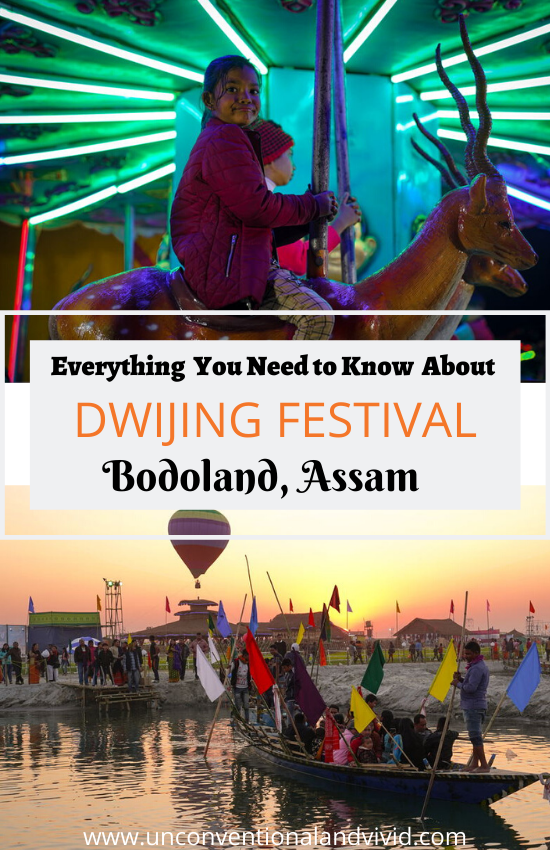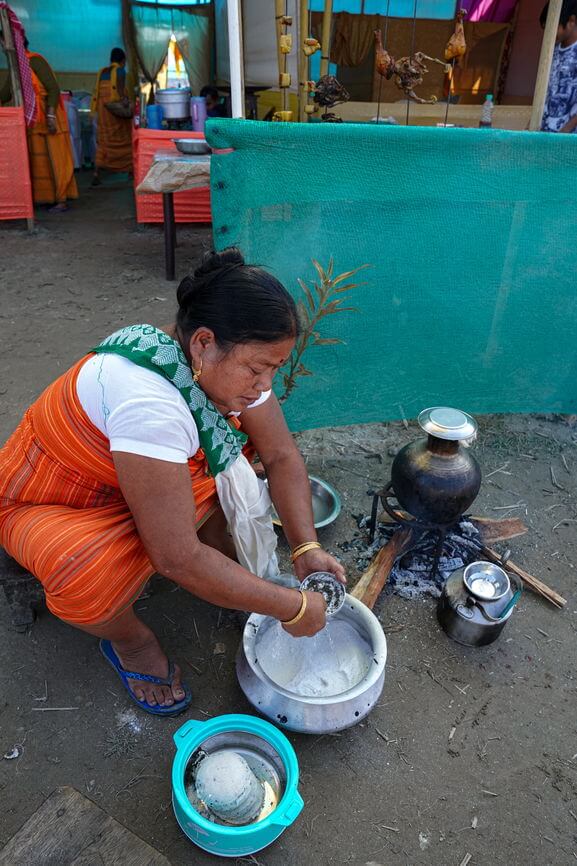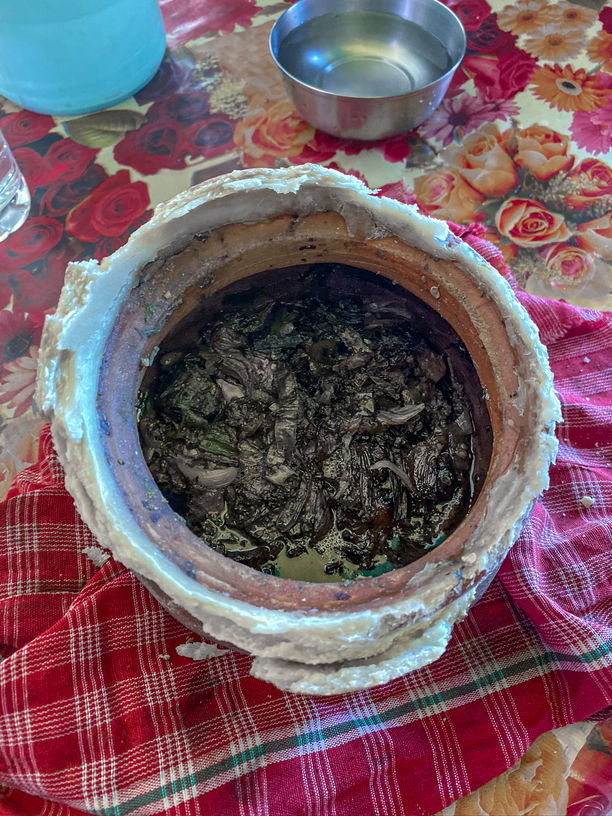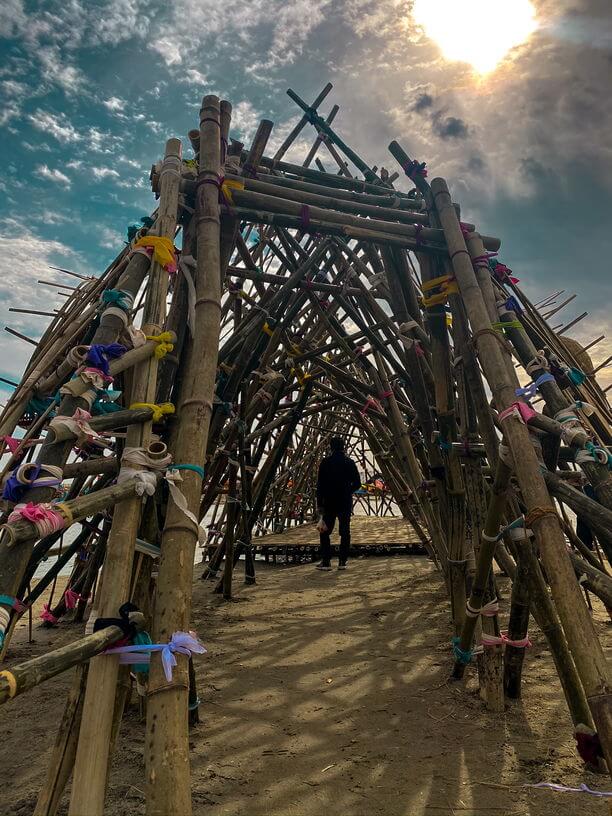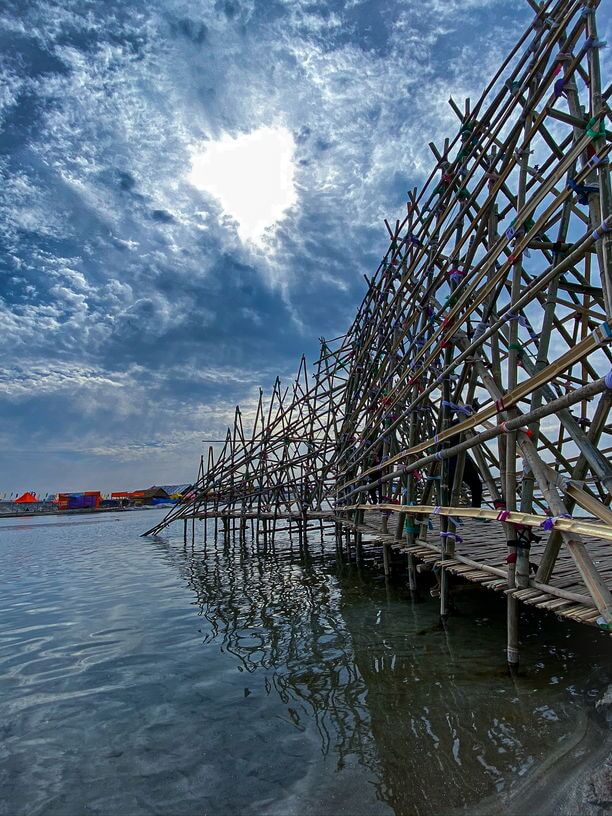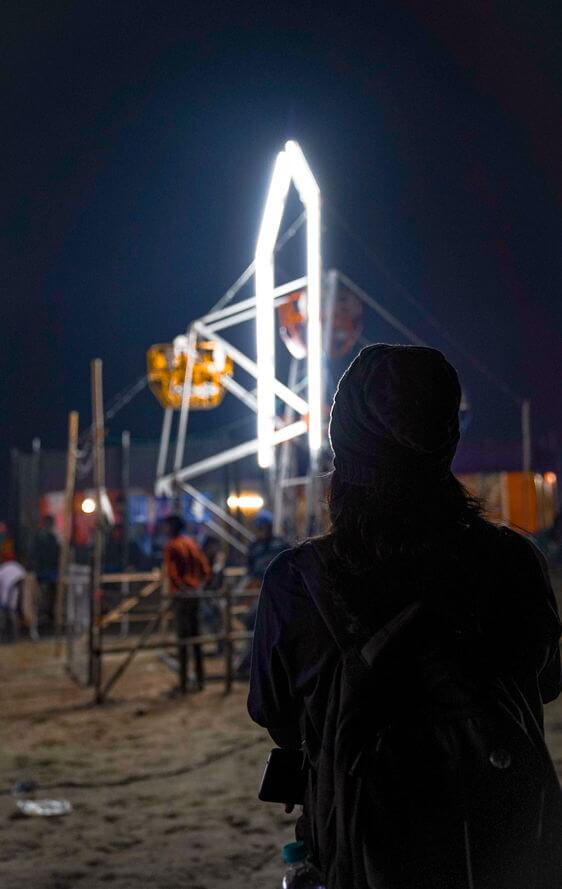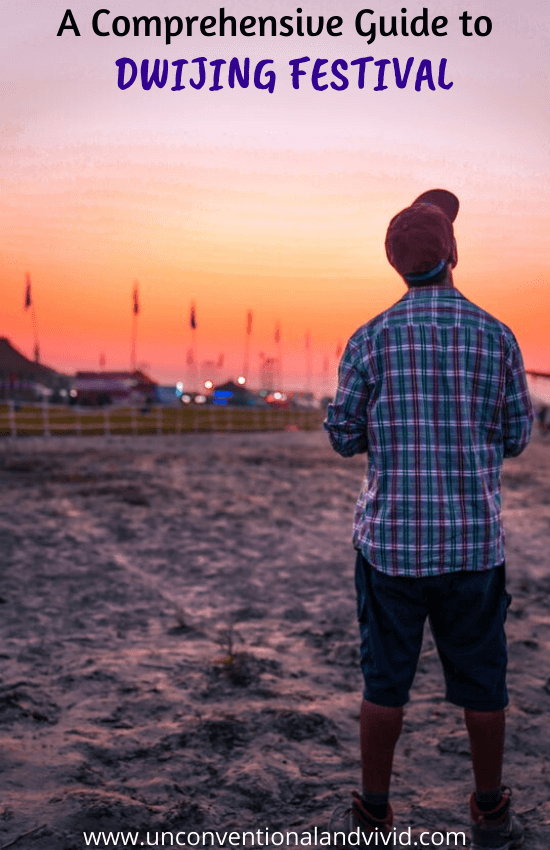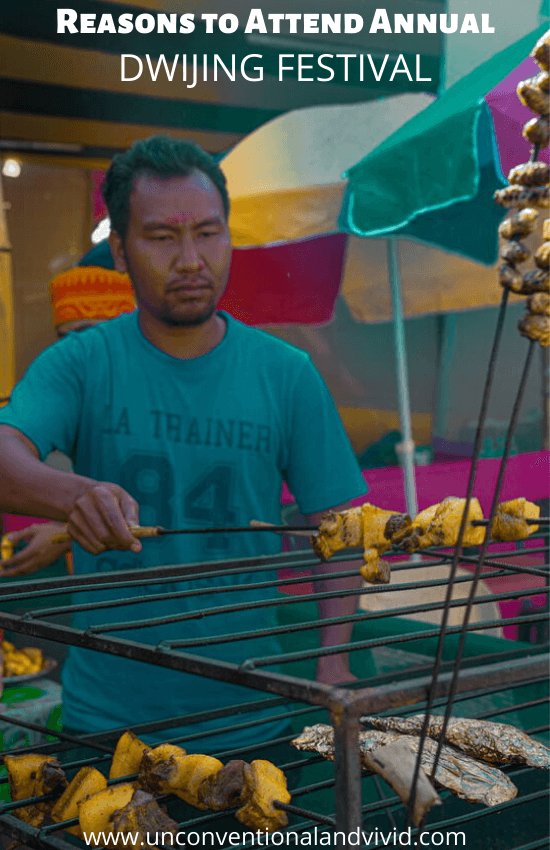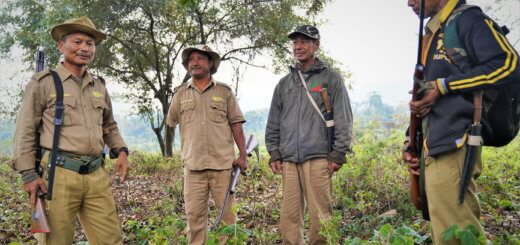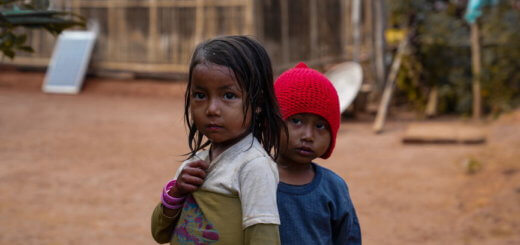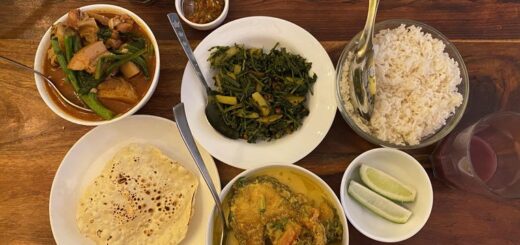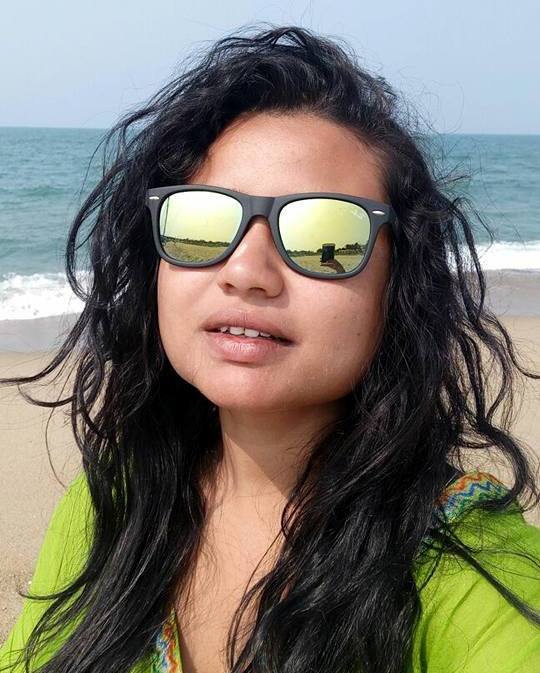Dwijing Festival – A Complete Guide to the River Festival, Bodoland
Dwijing Festival brings the solitary banks of Aie River under the Hangrama Bridge alive with its incandescent amalgamation of local culture, art nuances, adventure and power pact entertainment nights. The festival is a kaleidoscopic window to experiencing ethnic Bodo delicacies, tribal lifestyle, indigenous exhibitions, introspective art installations, local games & folk performances and celebrate the wholesome fanfare.
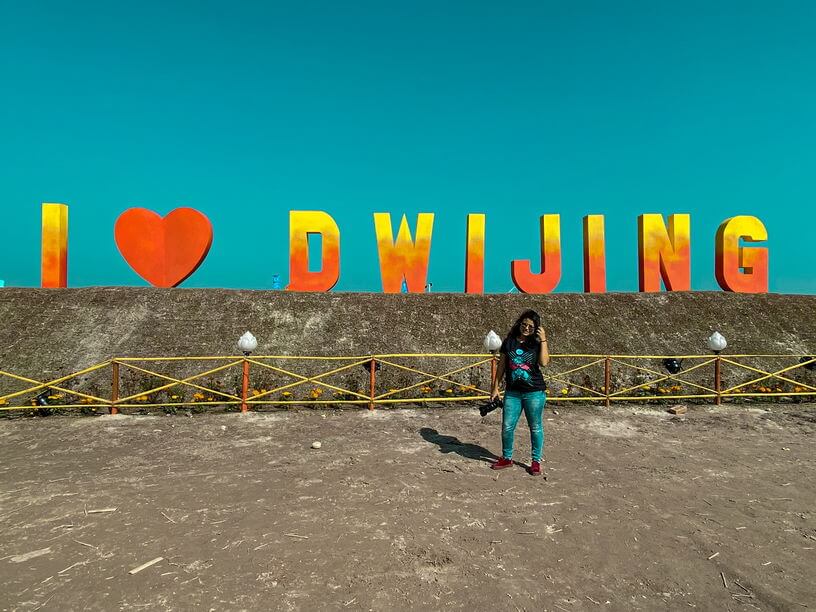
The festival ground was illuminated around the entire circumference and every corner was a resplendent burst of colors. All things bright and colorful – the fluttering flags, mustard fields, colorful traditional Dokhonas elegantly wrapped by Bodo women, inviting a happy and vibrant vibe.
Read about my experience in exploring untouched parts of Bodoland.
PIN THE POST TO READ LATER
Table of Contents
What is Dwijing Festival?
The Dwijing Festival is an annual River Festival and celebration of Bodo culture, traditions fused with folk performances and Bollywood extravaganza on the banks of Aie River in Chirang District, Bodoland. It is a 12 day showcase of indigenous tradition and culture spread along the riverbank bringing together food, folk performances, local handicrafts and art, folk music, traditional Bodo games, exhibition, entertainment and adventure all under the same roof.
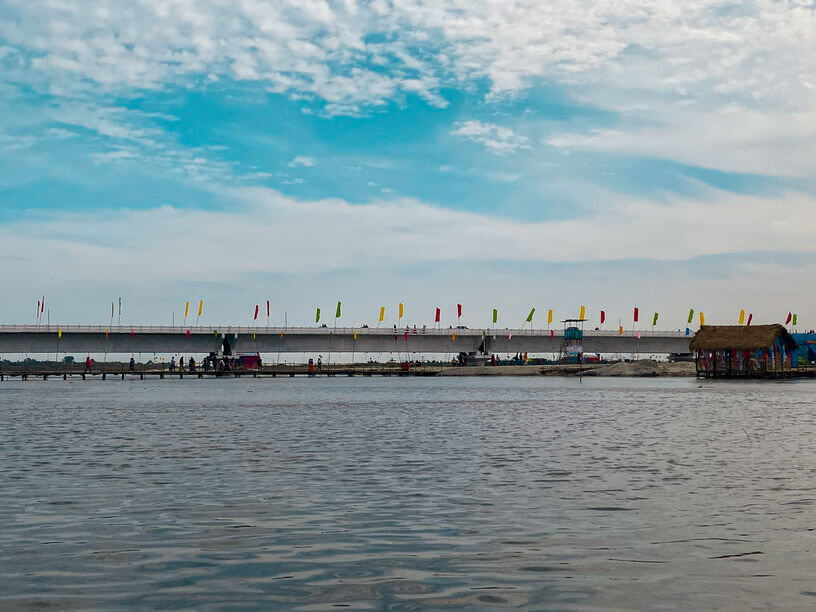
The Festival is organized jointly by Assam Tourism Development Corporation and Bodoland tourism as an effort to boost local economy and splendidly take the wraps off the exquisite culture of Bodoland. The mayhem created in the yesteryears through political turmoil has subsided with an attempt through initiatives. The first edition of the festival started in 2016 -2017 by the local Bodo community on a small scale but gradually it received massive footfall. The 3rd edition of the festival in 2018- 2019 received a grand response with massive footfall and it gradually further amplified the 4th edition.
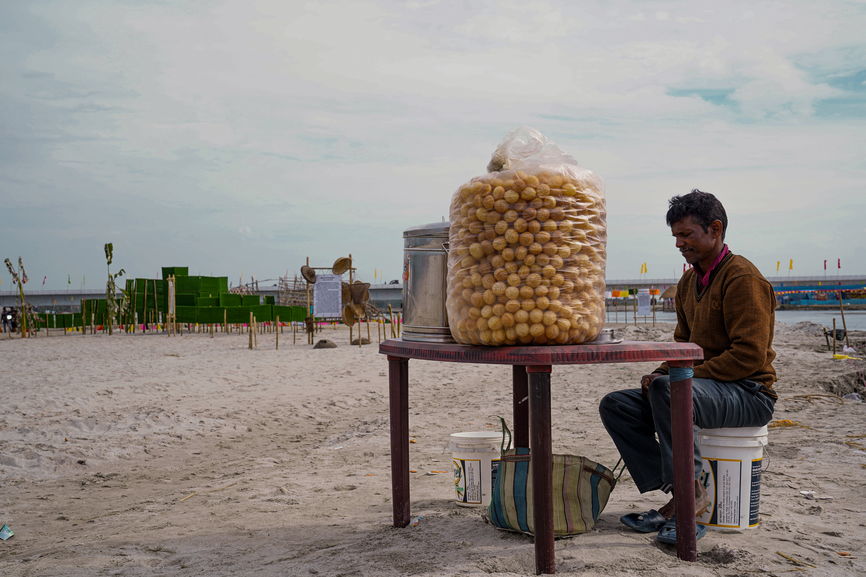
Main Goal of Festival
The main aim behind the 12-day extravaganza is to promote indigenous local culture neglected behind decades of extremism and instability. Bodoland is a hidden paradise wrongly shrouded by fear created with unstable political ripples that happened years ago, but this festival aims to erase false notions by bringing it on tourism map. It also serves as an opportunity to boost local livelihood through rural tourism and bring better prospective for artisans. With an opportunity to sell local handlooms, handicrafts, artifacts and indigenous food, the festival aims at providing financial aid to the local Bodo community.
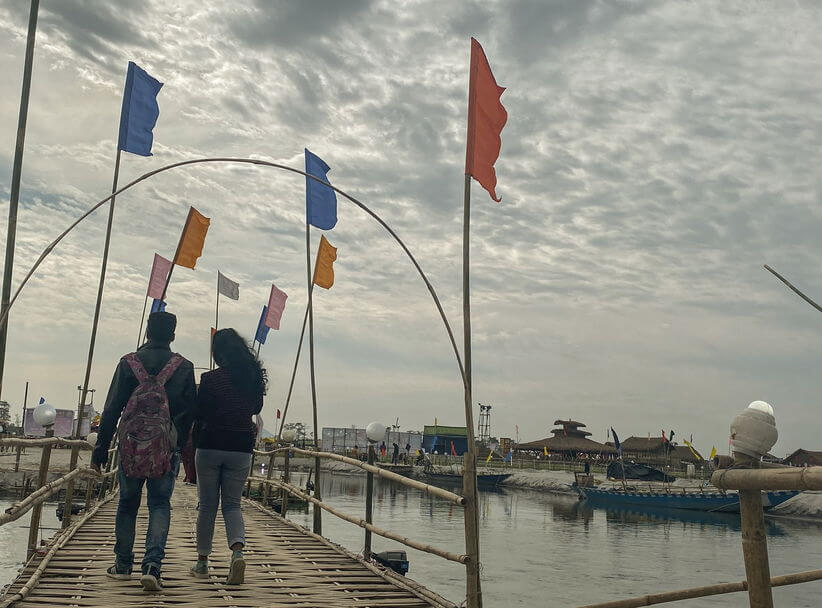
Experiences in Dwijing Festival

Steamed Rice Cake 
Chicken Handa (Tingkli Boil)
Taste the Ethnic Bodo Delicacies in the Food Stalls
Food is an integral part of any culture – be it at its delectable best or unusually bizarre, it defines a small part of lifestyle of a Tribe. The Dwijing Festival opened doors for local Bodo people to share the taste of their ethnic delicacies with everyone. The stalls were ready to serve. The smell of smoked pork infiltrated the food stall area. We saw an eccentric range of food – plate of fried silkworm garnished with onion and coriander, frog meat, pigeon fry, snail curry, fished steamed with local herbs and wide range of fermented items.
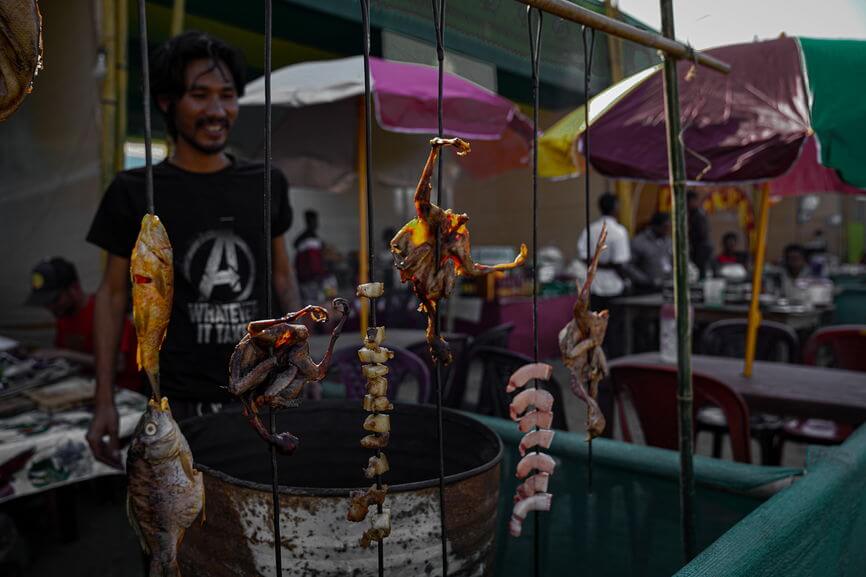
One of the ethnic foods that caught my fancy was Bodo Handa (called Tingkli Boil) – a slow cooked chicken with local herbs, leaves and spices in an Earthen pot covered with leaf. It takes an hour to cook the chicken and uncovering the cover fills the air with aroma. The steamed rice cake with coconut sandwiched in between is an omnipresent delicacy of Assam including Bodoland. There was a plethora of herbs, local leafy and organic vegetables used in the cooking. Honestly, I am not an intrepid foodie and limited myself to tasting only silkworm apart from regular chicken and fish.
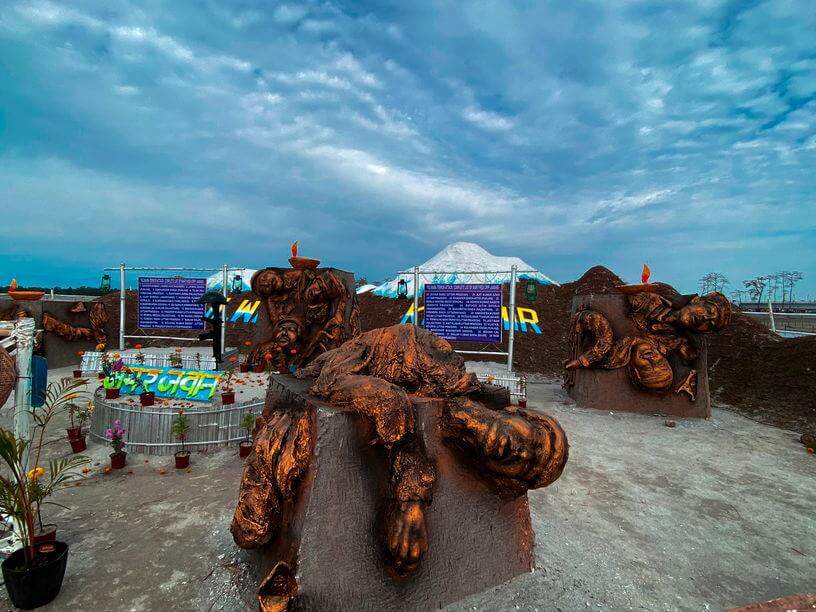
Witness Awe-inspiring Contemporary Art Installation
The art installations at Dwijing Festival was inspired by the voluminous integrity of Bodo culture and its existence through decades. Every art had a story behind knitted together through threads of humanity, social issues, historical references and an ensemble of traditions followed by Bodo community. Some of the amazing art installations that led me into deep introspective and delving into deeper perspectives.
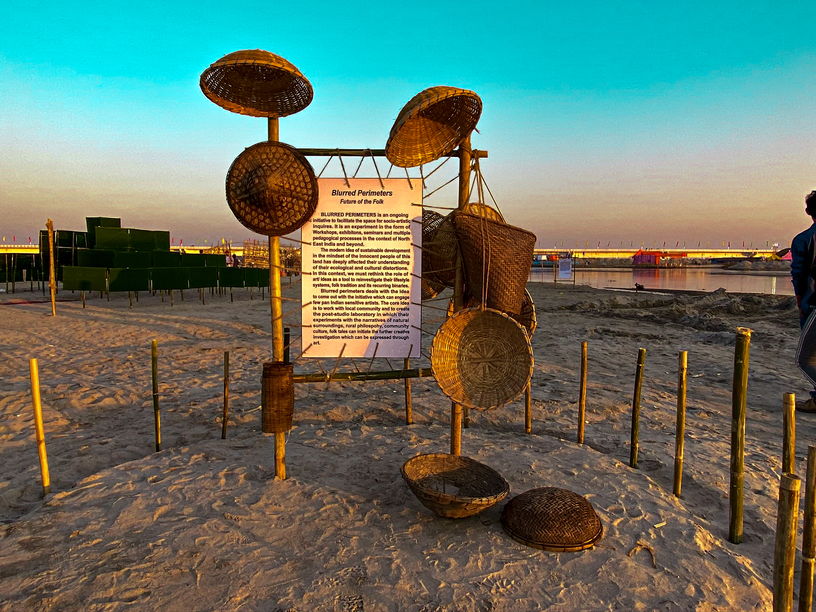
An Introduction to Blurred Perimeters by Wahida Ahmed
The project was conceptualized by contemporary artist Wahida Ahmed hailing from Sibsagar, Assam. All the art installations under the project were created with eco-friendly and sustainable products like paper, jute, hay, bamboo, thread, sand etc. Wahida Ahmed and her team of local artist create art defining humanity by blurring all the perimeters like religion, caste, society, creed, inequality and geographical boundaries. The artwork in Dwijing Festival 2019-2020 was inspired by the historical, folk and cultural glimpses of Bodoland. The main motive is to work with local community and showcase natural landscape, culture, socio-economic aspects, history, folk tales etc. through visual art forms.
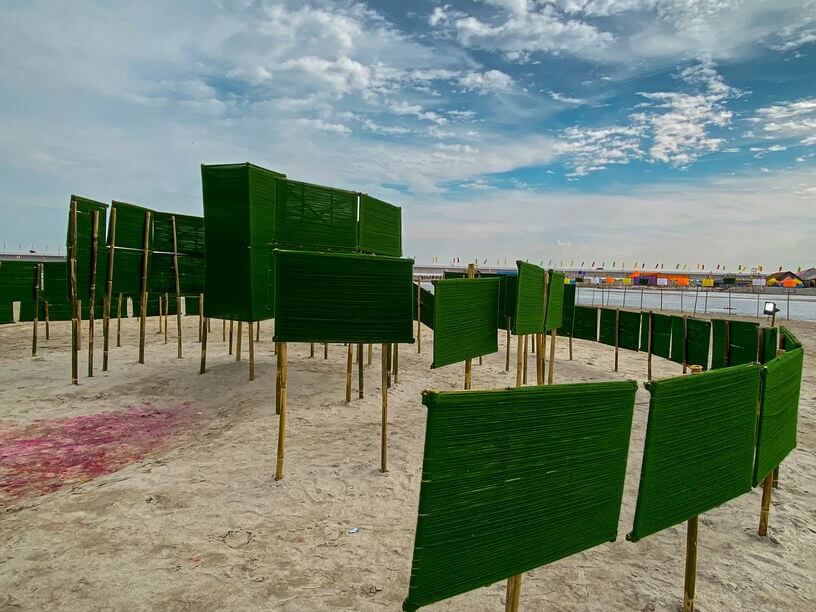
Thengphakri
The artwork represented a legendary folklore and was created weaving green threads around bamboo support. The art depicts the story of a brave and strong Bodo woman Thengphakri, a folk tale passed on from generation to generation through narratives and folk songs. The lore says she was a widow who fought against prejudices and challenged social inequality despite being a widow. The art installation depicts the irony of how usual things and co-incidence merge together in life, an abstract representation of ideologies held by Thengphakri.
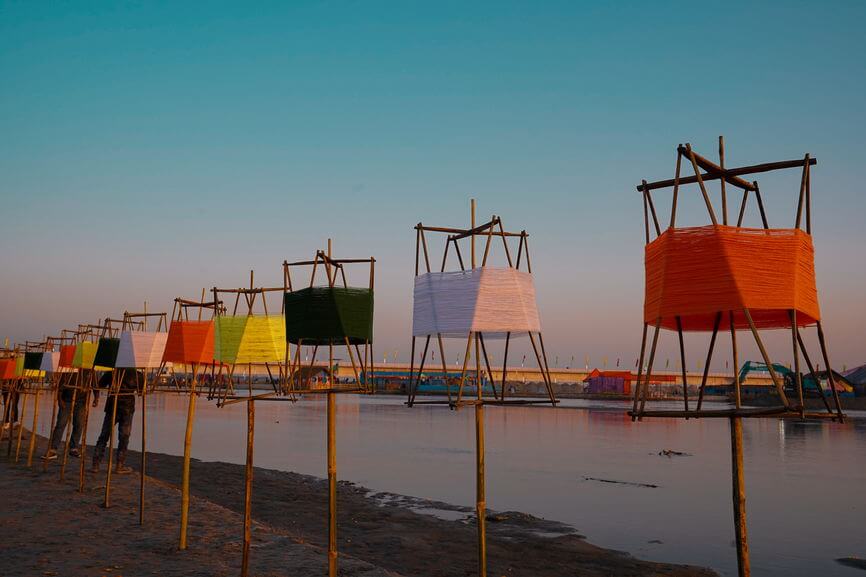
Serki
The art was a visual delight with silk thread of different colors delicately wrapped around bamboo prayer wheel. They represented the bells of Buddhist Monastery. It depicted the importance of weaving and threads in Bodo culture. The simple threads are beautifully intertwined to create finest of the handloom and handicrafts. The art reflects the importance of spirituality and its resemblance in work.
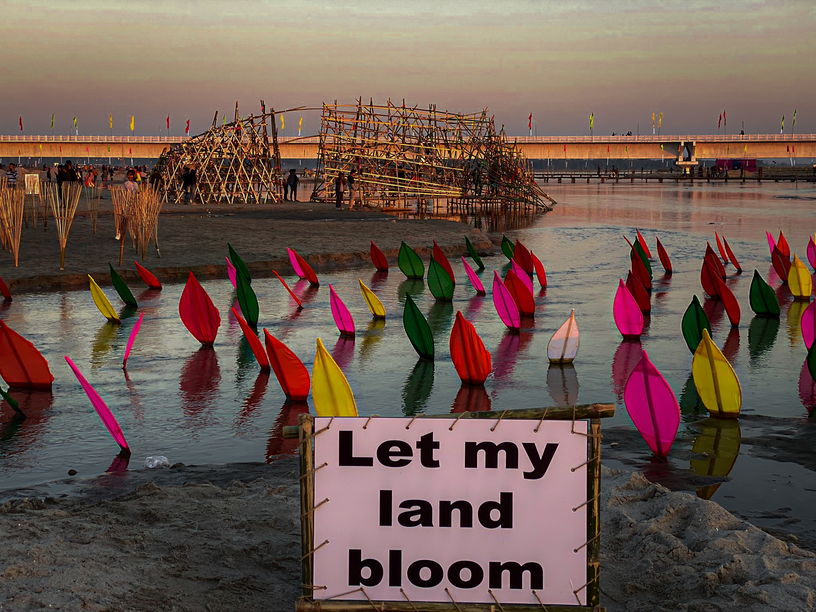
Let my land bloom
Indeed, the art installation got me contemplating of things that secretly carried a message of how unity and peace is the only way to grow. Acceptance be the solution to humanity. The art had a collection of fabric made flower petals glued to bamboo stick and was spread across the sand banks of Aie River. With acceptance of diversity and people, our country shall grow.
Some impressive art installations done by other artists:
Hut Huti by Pratul Dash
The artwork is inspired by the river and how it changes it course every year and creates numerous memories. The art depicts the confluence of three rivers – Aie river, Nangal Bhanga River and Hut Huti river, together that created a unique ecosystem in Bodoland but has become extinct now. The rivers contribute an important asset to the culture of Bodoland. The nature setting of Bodoland is defined by not only the river course but wind, honesty of the people, prominence of fishing in culture and bamboo. The art intertwines everything through creation of a giant fish skeleton made from local bamboo and inexpensive sustainable fabric.
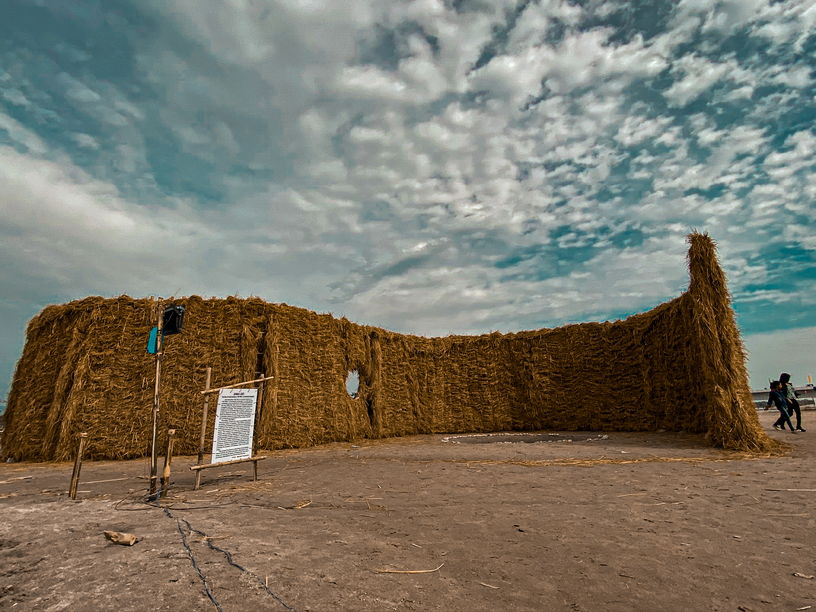
Bima Dei by Manish Pushkale
The artwork was inspired by the river Bima Dei and shows obeisance in merging of the ancient belief with modern civilization and how they work parallel to each. The concept shows how geopolitics act as barrier and divides people. The art compares the human thoughts and boundaries with the flow of river. Like the river flows indiscriminately along all the banks through it natural flow, humans also are all same but enclosed by a boundary or wall. The wall is created with bamboo which represents the boundaries we hold within us and as we step out of these, we realize the existence of biased notions and how tied we are in our brains.
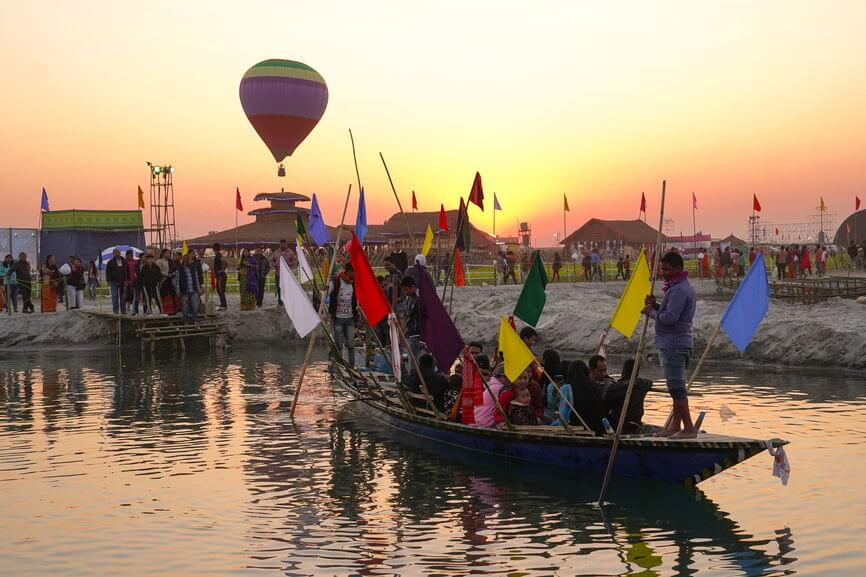
Enjoy Cultural Events and Local Games
There are many cultural events and folk performances that spark up the stage – soulful musical performances and folk dance from Bodoland and different parts of the country. The night welcomed the audience with soul melodious flow of music performed by several local artists. The stage was illuminated with lights and the dance groups brought out their best show. The day events were mostly a combination of traditional games, drama performances and sports.
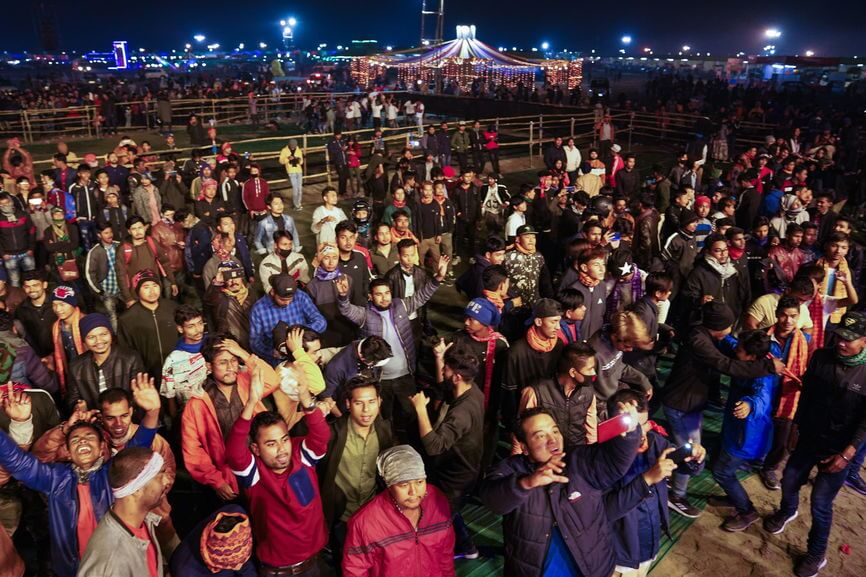
Shake a Leg at Bollywood Razzmatazz nights
The dazzle of Bollywood night set the stage in fire with crowd cheering and dancing to the tunes of music and live performances. Dwijing Festival 2019 -2020 saw live performances by some of the prominent Bollywood personalities. The festival stage on a grand scale was opened by musical duo Vishal-Shekhar followed by live performances by Neeti Mohan, Mika Singh etc. on consecutive days. A lot of performances by Bollywood celebrities were cancelled due to the ongoing Citizen amendment Bill problem.
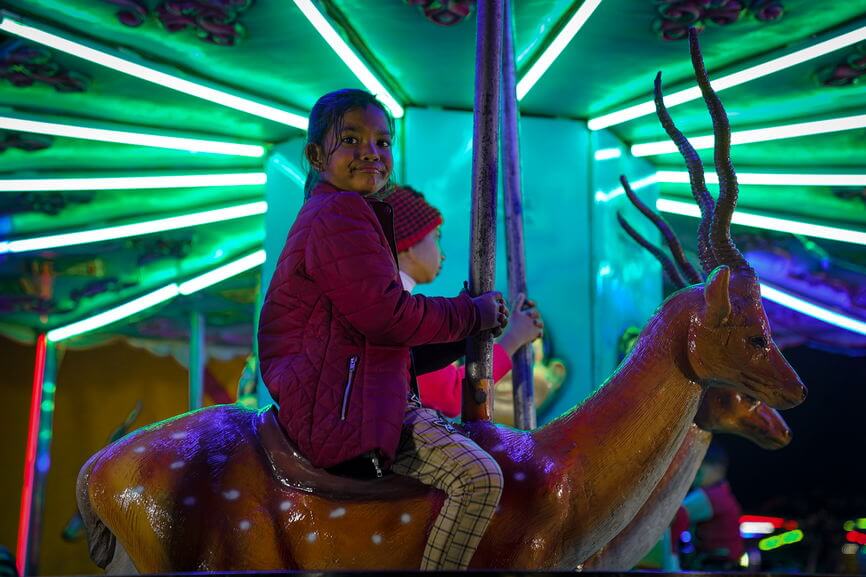
Kids Fair and Adventure Activities for Adults
The innocent giggles and cherubic laughter of the kids in the fareground was the best thing to witness. The fare area had different rides for kids, a nostalgic reminder of our childhood days. The fare area was surrounded by food stalls selling kid’s favorite. Every now and then a seller would pass with balloons, inflated toys, wind wheels, dream-catchers etc. While an area was dedicated for kids and their ride, there were many adventure activities even for adults. The hot air balloon ride, boat riding, Ferris wheel, paragliding etc. opened experiences for adults.
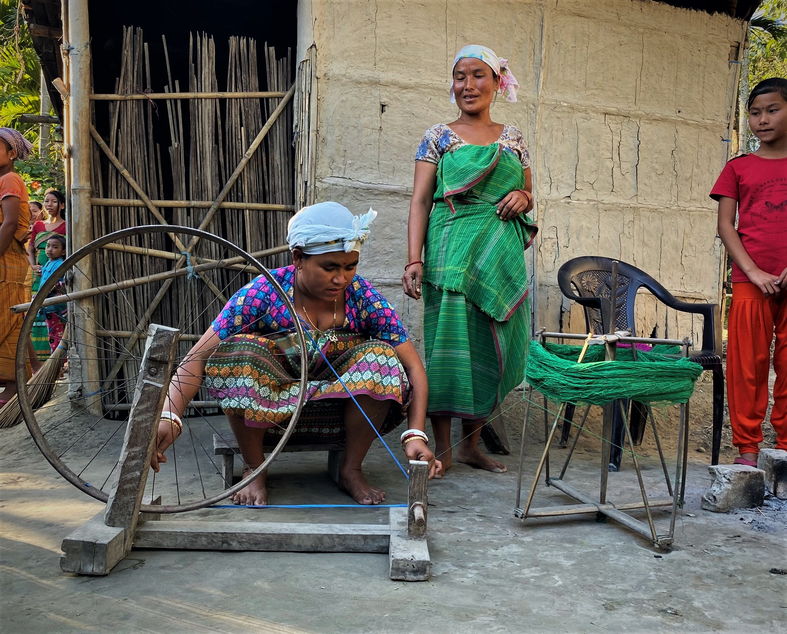
Handloom and Handicraft Exhibition and Stalls
The rich handloom of Bodoland is a work of intricate detailing with eccentric motifs hand weaved on traditional attires. The colorful Dokhonas are worn by the Bodo women and most of them are weaved at looms set up at homes of the locals. The ethnic products are made mostly by sustainable and eco-friendly products like bamboo, jute, local fabrics, wood etc procured from rural places . The handicrafts and handlooms exhibited in different stalls reflect the rich culture of Bodoland. The ubiquity of bamboo is dominantly seen in all the handicraft work with products exquisitely crafted from it.
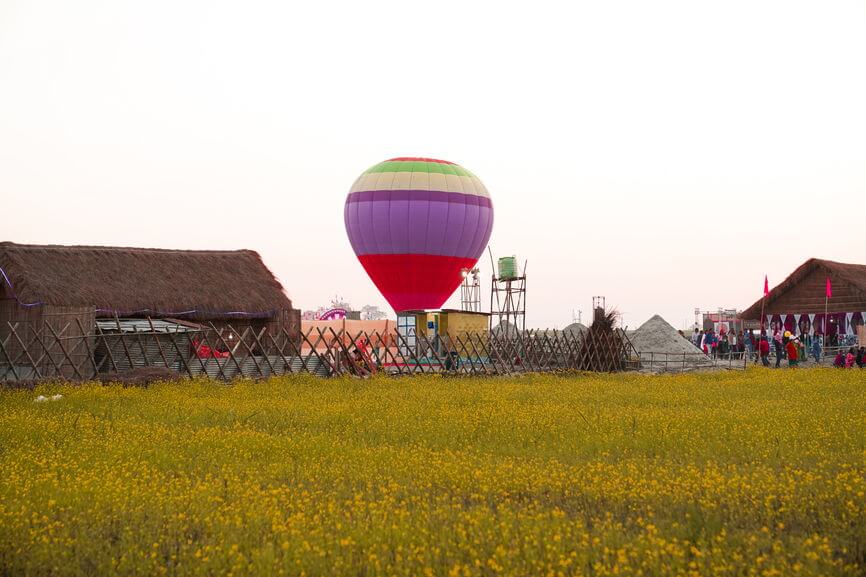
How eco-friendly is the River Festival?
Dwijing Festival and its organizers tried their best to maintain sustainability throughout the 12 day of the festive dates. Most of the handicrafts sold by local artisans were created from locally procured eco-friendly products. Even the art installations at the festival ground aimed at bringing together introspection on humanity coupled with use only eco-friendly and environmentally sustainable products. The use of papers and leaf for packaging and serving food was another attempt at creating sustainability.
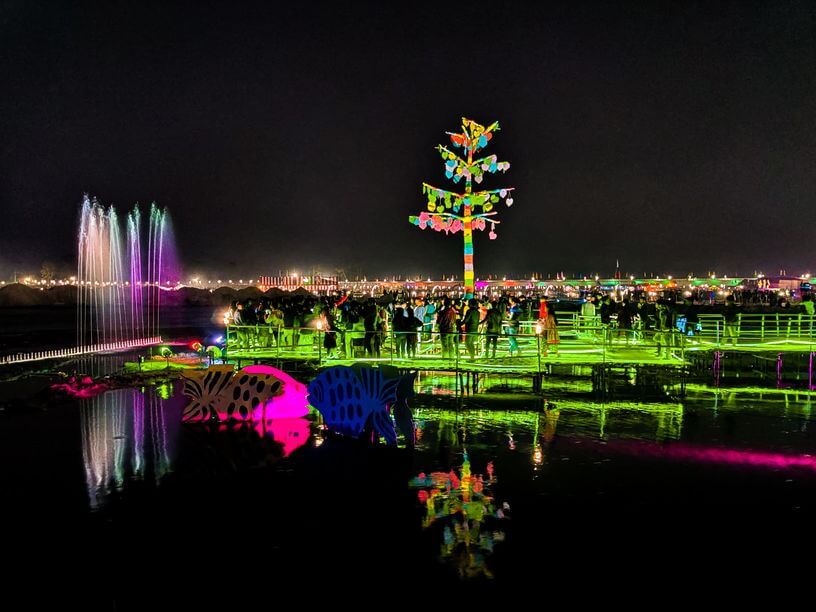
However, with use of plastic bottles and many other plastic items around the ground, the festival could have worked better in terms of sustainability. Dwijing Festival is a big platform with high number of tourist footfall and hence the management can work collectively to bring more awareness about dangers of plastic. With use of more bamboo products, the use of plastic glasses can be completely avoided.
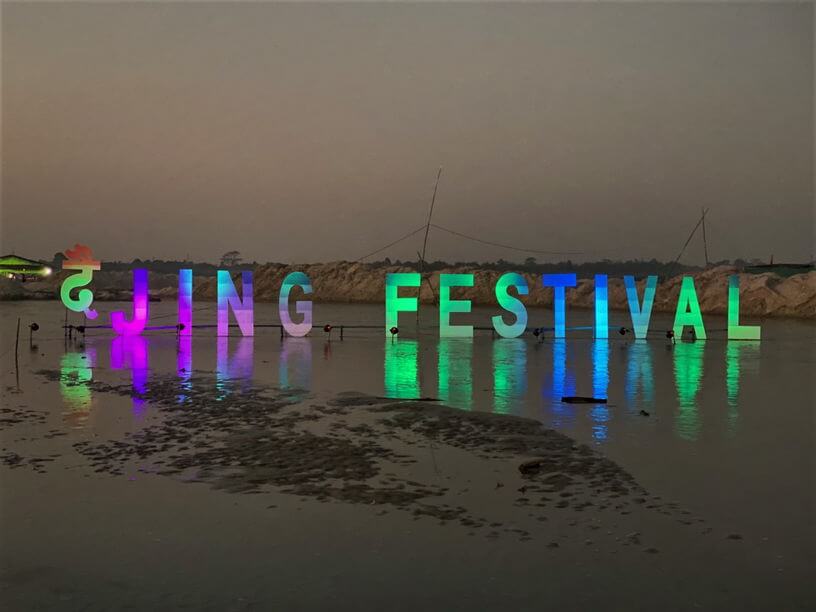
How to Reach Dwijing Festival?
The venue of Dwijing Festival is located very close to Bongaigaon – one of the major towns of Bodoland. It is around 20 minutes from Bongaigaon and can be easily reached via auto or car. Bongaigaon is well connected to Guwahati and other parts of the country via train. It is only 3 to 4 hours from Guwahati and can be traveled via train or bus.
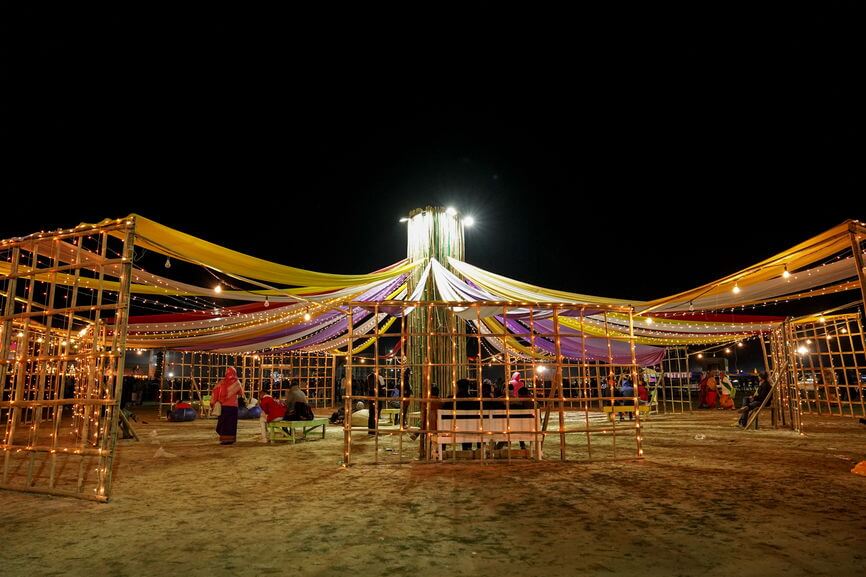
Accommodation around Festival
Riverside camping – The only type of accommodation available inside the festival ground is riverside camping. There are couple of local camping organization via whom you can book your tented accommodation.
Accommodation in Bongaigaon – There are couple of good hotels and homestay in Bongaigaon which is around 20km from festival ground. Cygnett Park Meghna in Bongaigaon is a 3-star property located centrally and conveniently distanced from the festival ground.
Final Words
Dwijing Festival is an annual celebration of Bodo culture, tradition and an attempt to bring together the nation to knowing more about Bodoland. The festival is quite a grandeur 12-day event aimed at boosting the rural economy, encouraging local artisans and exploring the pristine places around Bodoland. The festival not only illuminated the riverbank but also the lives of the Bodo local community through opportunities.
PIN THE POST TO READ LATER
Disclaimer: I was invited as “Ambassadors of Bodoland” on a media trip to Dwijing Festival by Assam Tourism and Bodoland Tourism. All the views about the festival are completely mine.

